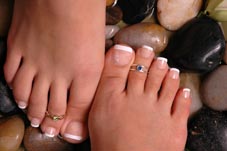Bound for ever
By Gvantsa Gabekhadze
Friday, April 9

In Hinduism and Buddhism, as in old Egyptian culture, the circle was a symbol of eternity. In Hindu-Buddhist traditions a circle with a point in the centre was also the symbol of the unification of male and female forces. A circle with a cross in it united the four sides of the world (north, south, east and west) and the four vital elements (earth, air, fire and water). This symbol was used by the Native Americans in their spiritual rituals. They believed that through this symbol the energy of their deity would be transmitted to them without obstacles.
The circle was also the symbol of eternity for ancient Egyptians, but had an additional symbolic meaning for them. One of the main Egyptian gods was the sun god Ra, who was obviously represented graphically by a circle. Ra protected his people, so this symbol also received this protective connotation. Only the names of pharaohs could be written inside this circle, which was called a cartouche, and the pharaohs believed that this circle around their name also protected them. When two hieroglyphics of Cleopatra and Ptolemy were discovered their names were written inside circles, and this made it easier for Jan Francois Champollion to decode hieroglyphics, as he already knew that names in circles must be those of pharaohs.
The tradition of wearing the wedding ring on the third finger is not Christian and comes from the ancient Egyptians. Human anatomy was quite closely studied by the ancient Egyptians and they knew that the third was the only finger which was directly connected to the heart by a vein. As the heart is connected with the feeling of love, Egyptians symbolically related this finger with love and marriage.
This tradition was later adopted by the Romans and Greeks, as Aulus Gellius wrote, for the same reason. He called the little nerve that goes straight to the heart from this finger the Vena Amore (Vein of Love). This finger was also considered magical by the ancient Romans and Greeks and physicians would stir their medicines and potions with it.
The tradition of wearing the wedding ring on the third finger has now become an inseparable part of Christian culture. Rings are also associated with marriage in non-Christian cultures but with some differences. In India the toe ring is the symbol of marriage. Toe rings carry a lot of social significance and are considered an essential accessory for the married woman. There is a special ceremony of bestowing toe rings at the time of marriage, in which the bridegroom puts the ring on the bride's toes. In Hindu culture unmarried girls are therefore prohibited from wearing toe rings. Though toe rings are now a fashion ornament for some, Indian girls still refrain from wearing toe rings before marriage.
